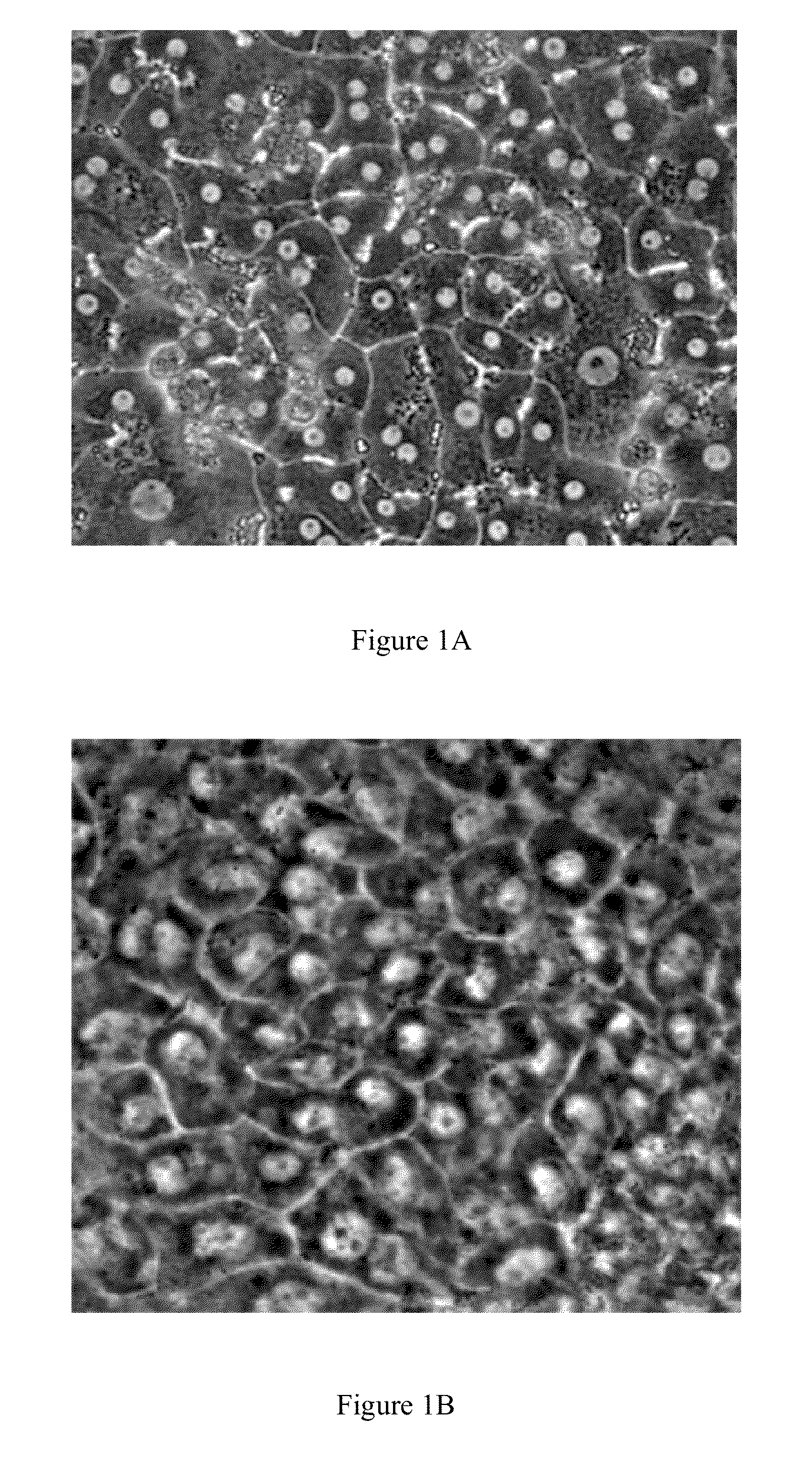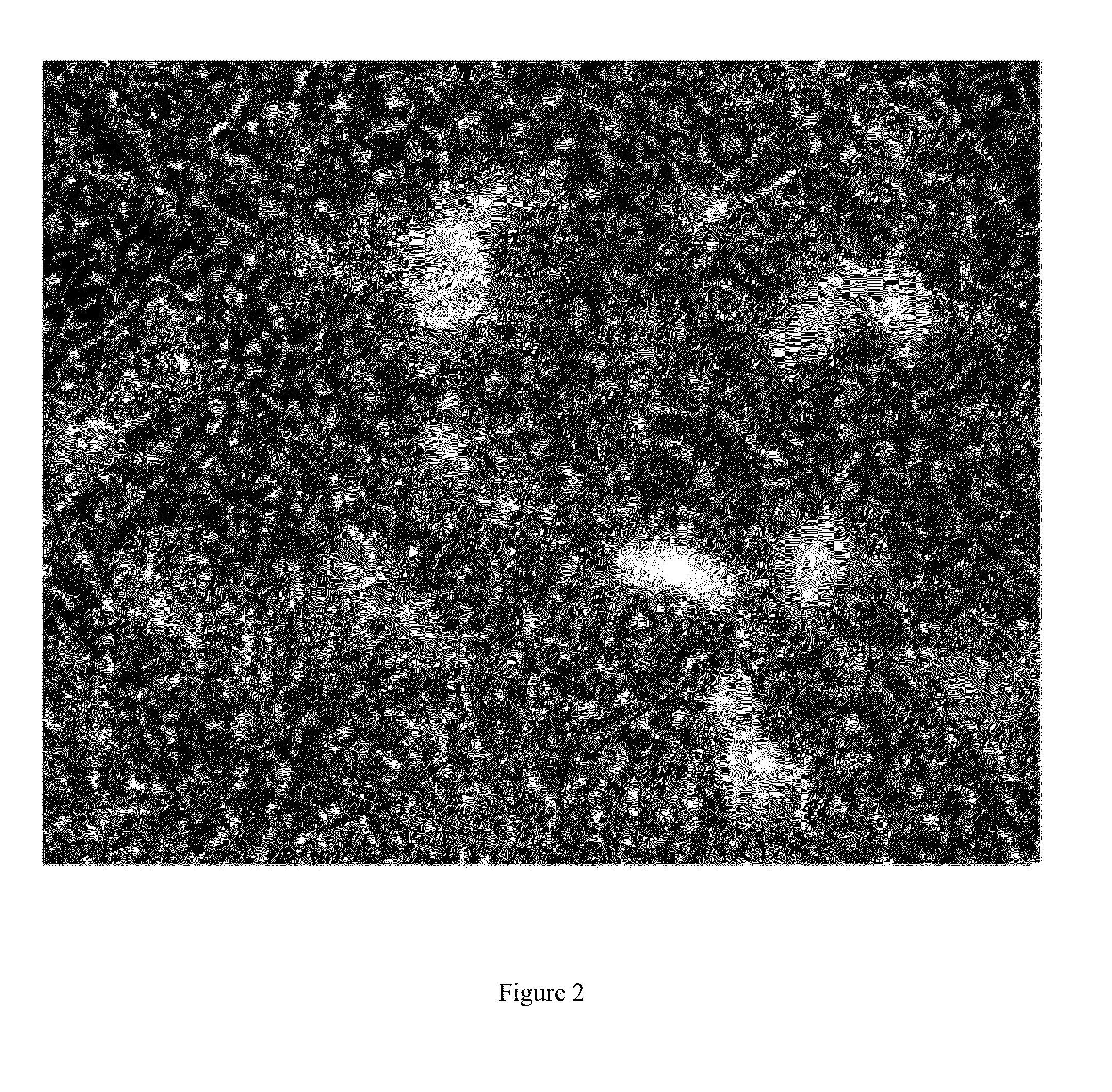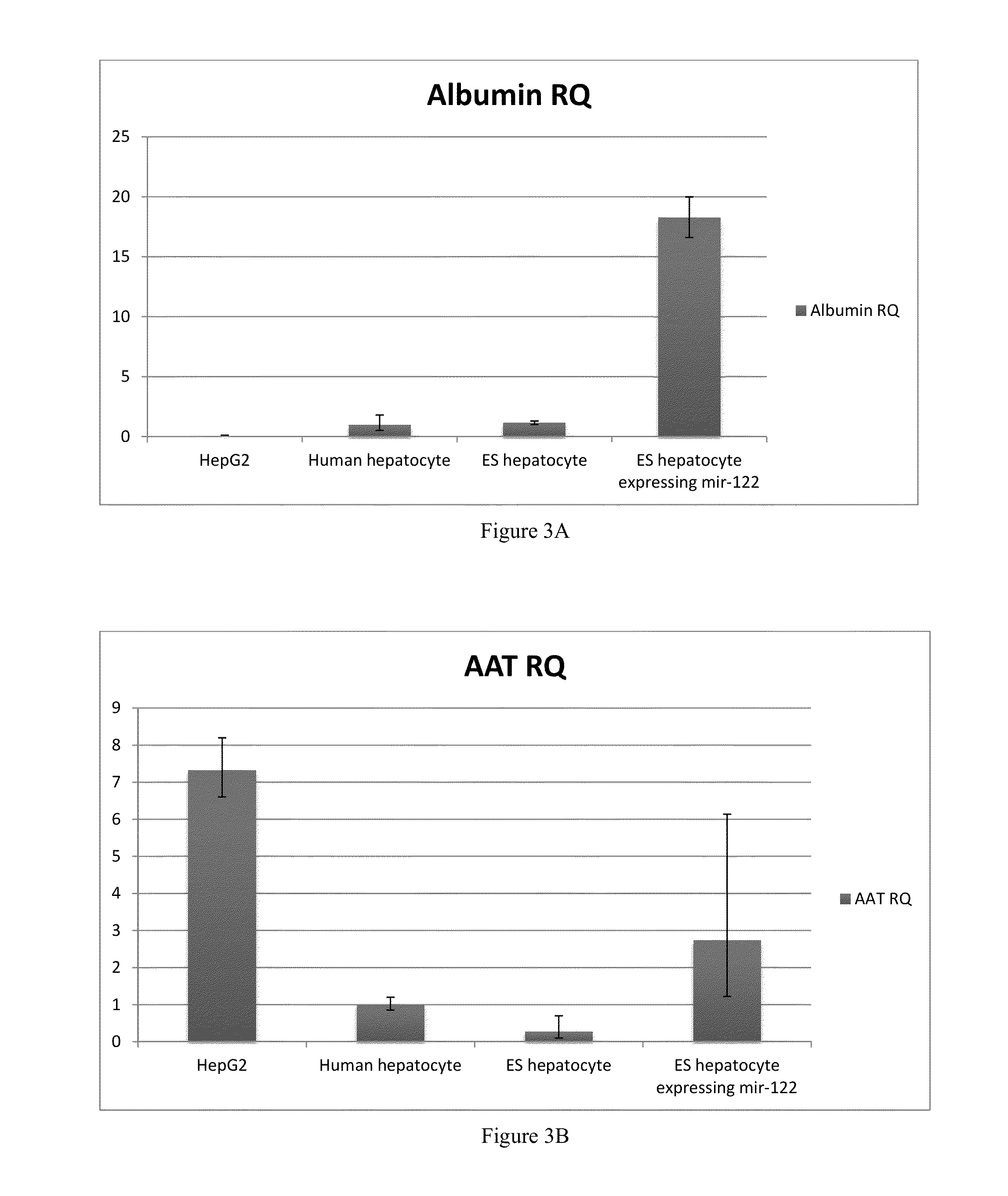Method of deriving mature hepatocytes from human embryonic stem cells
- Summary
- Abstract
- Description
- Claims
- Application Information
AI Technical Summary
Benefits of technology
Problems solved by technology
Method used
Image
Examples
example 1
Expression of Mir-122 in Human Embryonic Stem Cell-Derived Hepatocytes Induces Cytochrome P450 and Other Liver Genes, Facilitates Highly Efficient Drug Processing, and Supports In Vivo Replication of HBV and HCV
[0103]Introduction
[0104]Hepatocytes differentiated from human embryonic stem cells (hES cells) are fetal in nature i.e., they do not express cytochrome P450 genes or metabolize drugs in vitro. Here we report that miR-122, an abundant adult liver-expressed miRNA, when expressed in fetal hepatocytes derived from hES cells, induces increased expression of cytochrome P450 and other mature liver-specific genes. Further, the resulting cells metabolize drugs highly efficiently, thus validating their usefulness in drug metabolism and toxicity testing.
[0105]Cultured hepatocytes are an indispensable tool for testing drug metabolism and toxicity. Human primary hepatocytes are ideal for such purposes but rapidly lose expression of cytochrome P450 enzymes and their capability for xenobiot...
example 2
Expression of Mir-122 Extends Functional Gene Expression in Human Hepatocytes Derived from Liver Tissue
[0123]Primary human hepatocytes isolated from liver tissue lose expression of functional genes in culture over time. In this example, we show that overexpression of mir-122 in cultured human hepatocytes can induce expression of functional genes over an extended period of time.
[0124]We cultured primary human hepatocytes (both control hepatocytes and hepatocytes into which vectors were transferred to express mir-122). Mir-122 was transduced into these primary hepatocytes using the lentiviral vector PEZX-MR01. GFP expressing cells were FACS sorted before RNA isolation and gene expression measurements using QPCR.
[0125]Results
[0126]As shown in FIGS. 6a through 6e, mRNA levels for all functional genes except albumin decreased in the control hepatocytes cultured for 9 days or more, as compared to fresh, uncultured hepatocytes (day 0). Unexpectedly, all of those genes regained their expres...
example 3
Expression of hESC-Derived Mature Hepatocytes Transduced with Mir-122: a Side by Side Comparison with Fresh Human Hepatocyte Expression
[0127]In this example, we performed a QRT PCR comparison of the gene expression levels of the mature hepatocytes produced from human embryonic stem cells according to the procedure outlined in Example 1 (ES hepatocyte expressing mir-122), the expression levels for the same proteins in human primary hepatocytes (Human hepatocyte), the expression levels for the same proteins in the fetal hepatocytes before transduction (ES hepatocyte), and the expression levels for the same proteins in HepG2 cells.
[0128]All functional genes measured in the transduced mature hepatocytes (albumin, alb; tyrosine aminotransferase, tat; CYP1A2; CYP7A1; CYP3A4; alpha-1 antitrypsin, aat) exhibited equal or greater expression than in primary hepatocytes (see FIGS. 3a through 3f).
PUM
| Property | Measurement | Unit |
|---|---|---|
| Fraction | aaaaa | aaaaa |
| Fraction | aaaaa | aaaaa |
| Time | aaaaa | aaaaa |
Abstract
Description
Claims
Application Information
 Login to View More
Login to View More - R&D
- Intellectual Property
- Life Sciences
- Materials
- Tech Scout
- Unparalleled Data Quality
- Higher Quality Content
- 60% Fewer Hallucinations
Browse by: Latest US Patents, China's latest patents, Technical Efficacy Thesaurus, Application Domain, Technology Topic, Popular Technical Reports.
© 2025 PatSnap. All rights reserved.Legal|Privacy policy|Modern Slavery Act Transparency Statement|Sitemap|About US| Contact US: help@patsnap.com



